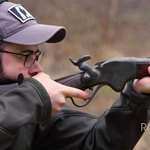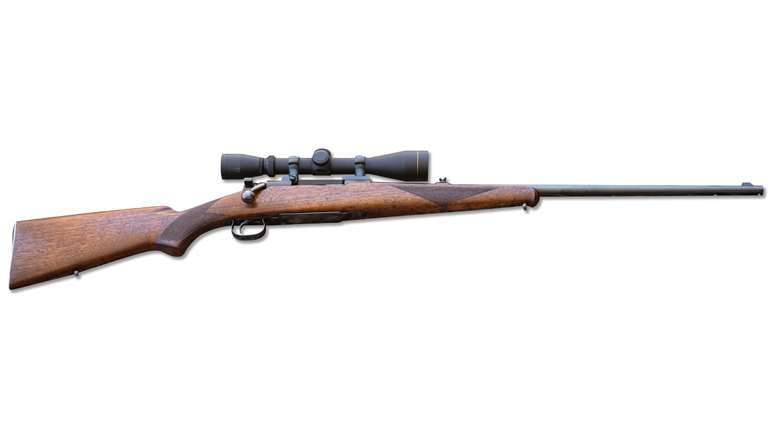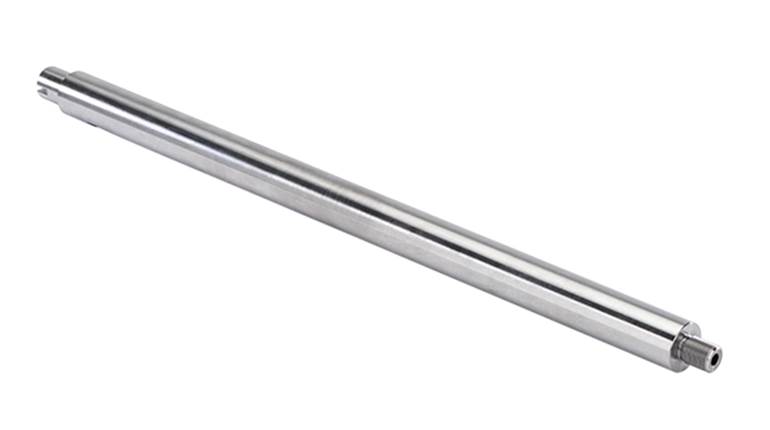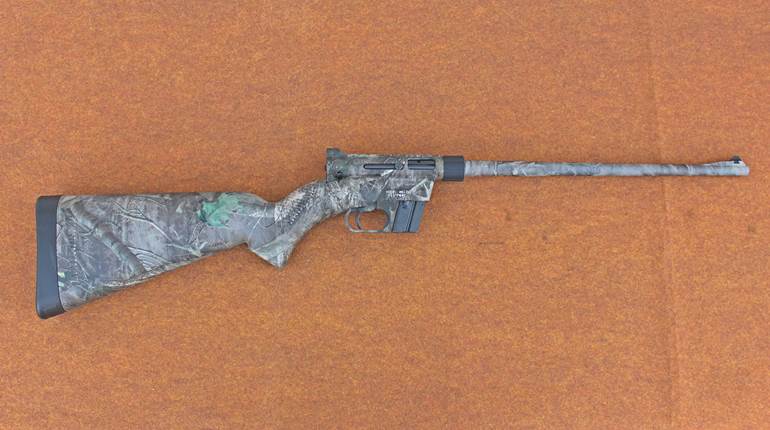
Gun: British Pistol, O.P. No. 1, Mark I
Manufacturer: Garate, Anitua y Cia (Spain)
Chambering: .455 Webley
Manufactured: 1916
Condition: NRA Very Good (Modern Gun Standards)
Value: $575
World War I, as it would come to be known, rather took most powers by surprise. In 1914, Great Britain, which had not entered into a formal alliance with France and Russia, was expected by some to sit on the sidelines while the others went at it. An agreement with Belgium assuring that country’s integrity changed all this, and when the Germans crossed the Belgian frontier, Britain declared war on the Kaiser.
Unfortunately, the British military was lacking materiel in a number of areas, including handguns. In short order, authorities began casting about to find sources to supplement what stores they had on hand. The War Office turned to two neutral countries, the United States and Spain, to achieve that goal.
Eventually, large numbers of Colts and Smith & Wessons were procured from the United States. From Eibar, the Basque firearms center of Spain, it was decided to contract for copies of the Smith & Wesson Model 3 double-action revolver of 1881 chambered for the British .455 Webley service cartridge.
Spain had adopted such a handgun in its .44 Russian-chambered Modelo 1884 service arm, and indigenous makers had been manufacturing them, as well as civilian copies, for a number of years. As production of the guns was already well-established, basically all that was needed was to increase the caliber to .455.
 After some deliberation, the British chose two firms, Garate, Anitua y Cia and Trocaola, Aranzabal y Cia, to undertake the task. The revolvers would be designated by the British as “Pistol O.P. with 5-inch barrel No. 1, Mark I” and “Pistol O.P. with 5-inch barrel No. 2, Mark I” (O.P. stood for “Old Pattern”), respectively. They were virtually identical, the major difference between the two being that the Garate had a slightly flattened butt with an exposed portion projecting below the stock panels, while the Trocaola had a full bird’s head grip.
After some deliberation, the British chose two firms, Garate, Anitua y Cia and Trocaola, Aranzabal y Cia, to undertake the task. The revolvers would be designated by the British as “Pistol O.P. with 5-inch barrel No. 1, Mark I” and “Pistol O.P. with 5-inch barrel No. 2, Mark I” (O.P. stood for “Old Pattern”), respectively. They were virtually identical, the major difference between the two being that the Garate had a slightly flattened butt with an exposed portion projecting below the stock panels, while the Trocaola had a full bird’s head grip.
As noted earlier, both revolvers were close copies of the DA/SA top-break S&W Model 3, featuring toggle-style top latches, simple non-adjustable rear notch sights and large hemispheric blade fronts. Finish was blue, with casehardened triggers and hammers, and stocks were made of checkered horn, wood or hard rubber—the latter, used by Garate, emblazoned with elaborate monograms. The revolvers’ frames were stamped with company logos below the hammers. As noted in the official War Office designation, barrels were 5". Overall length was 10", and weight was around 2 lbs., 8 ozs.
Perhaps the major Spanish design departure from the original American Smith & Wesson was a mechanism that allowed the guns’ unlocked cylinders to rotate freely when the hammers were down. This meant that when a soldier brought his revolver into action, he could never be positively sure that the chamber under the hammer was the one next to the last shot fired.
Officially adopted on Nov. 8, 1915, a total of some 30,000 units were expected to be delivered by the two makers by late July 1916. Garate and Trocaola scrambled to meet the deadline, and examples soon began to arrive in Britain. The quality of the guns, like most Iberian arms of their ilk, was quite good, however, the firms’ practice of largely relying upon contractors rather than having them built wholly at a company factory resulted in small variances that were met with poor regard by British inspectors accustomed to the exact tolerances seen in domestic products. Though eminently serviceable, considerable numbers of Spanish revolvers were rejected or sidelined, and few ended up experiencing active service.
Extant examples of No. 1s and No. 2s show great variance in British markings, with some having none, others with sparse viewer’s marks and some replete with broad-arrow stamps indicating military acceptance. By the end of 1916, the Eibar builders had delivered slightly less than the agreed-upon quantity, though it appears the underwhelmed British were not all that concerned about the shortfall. Garates and Trocaolas were kept in British stores until 1921, at which time they were considered obsolete.
The Spanish .455 we’re looking at here is a Garate in very good condition. Its quality of workmanship is just fine. This particular example is stamped with British inspector marks—something not always seen. Though interesting and legitimate Great War sidearms, Garates and Trocaolas have not really caught enthusiasts’ interests, and while no British Great War handgun collection would be complete without one of each, demand and prices are moribund. Thus, value on this example would be just $575.



































